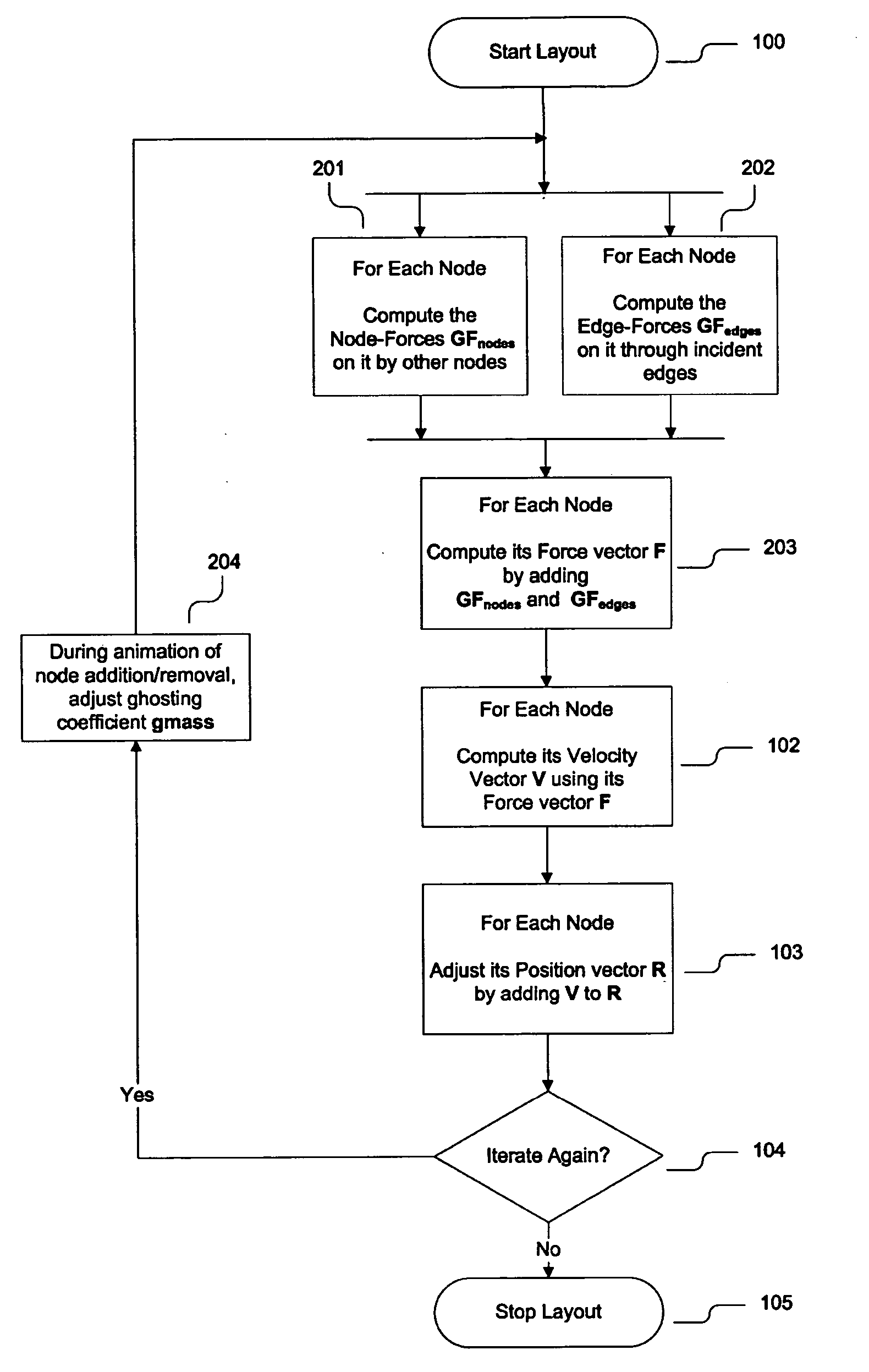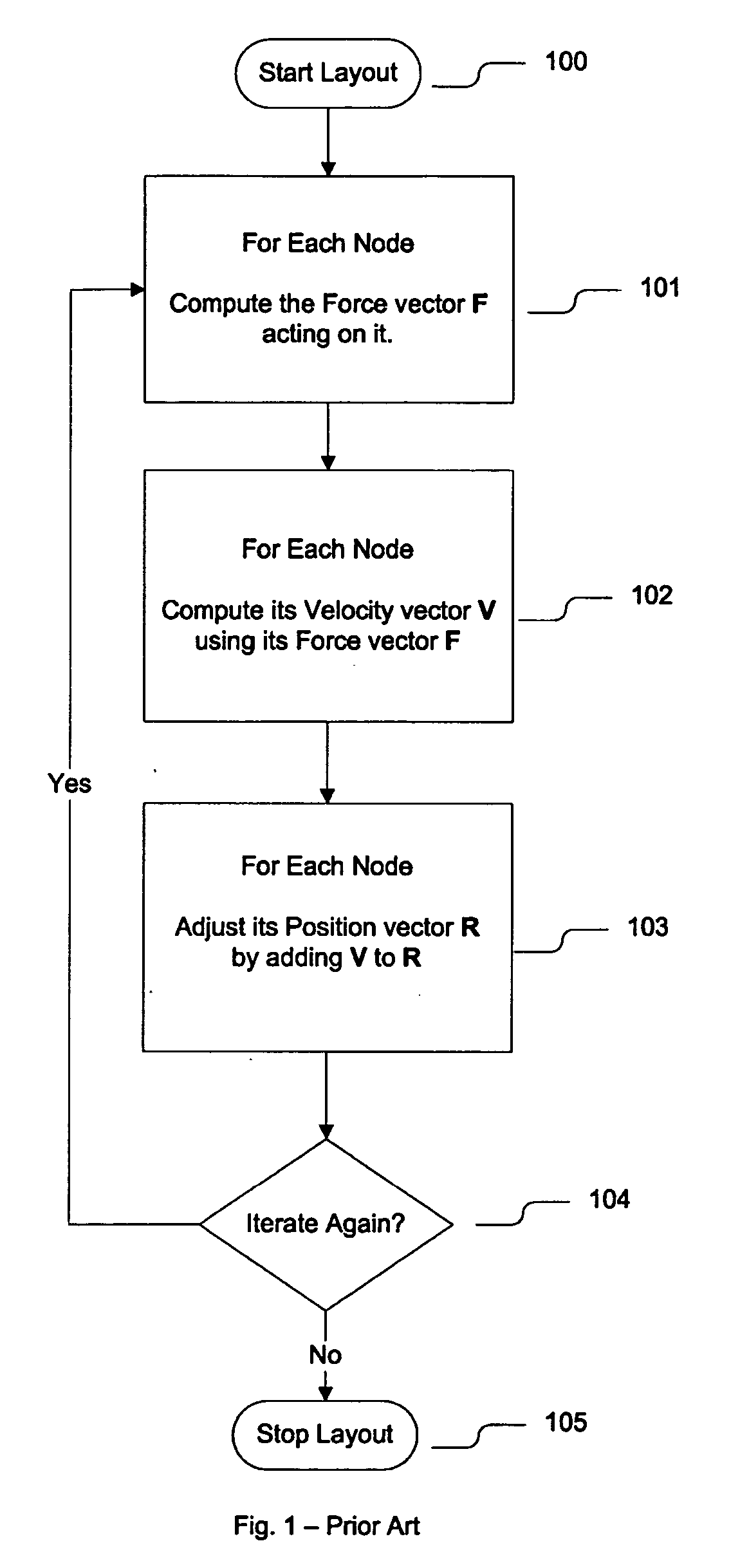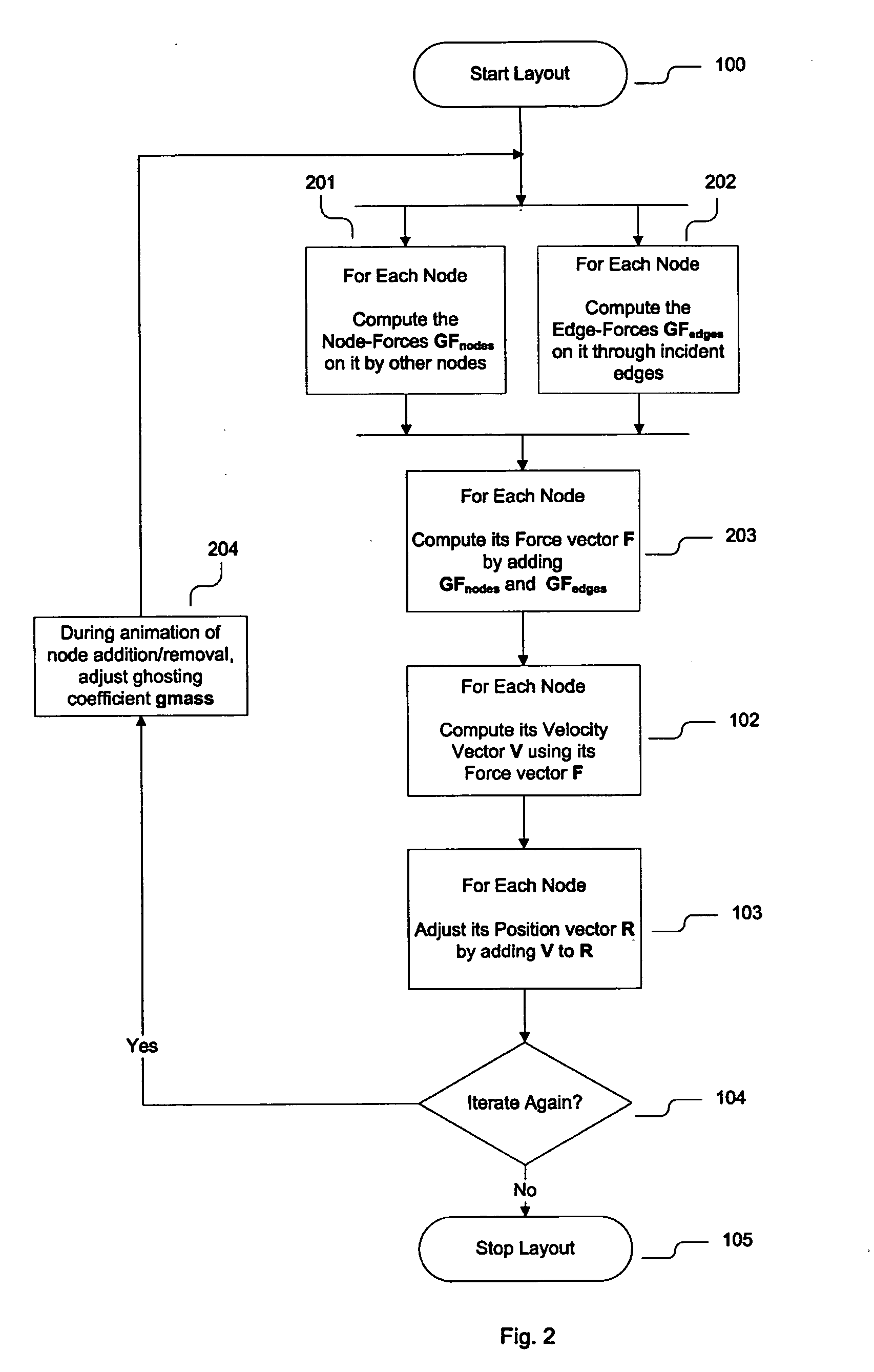Method of animating transitions and stabilizing node motion during dynamic graph navigation
- Summary
- Abstract
- Description
- Claims
- Application Information
AI Technical Summary
Benefits of technology
Problems solved by technology
Method used
Image
Examples
Embodiment Construction
[0028] The present invention can be implemented on computer hardware with a central processing unit (CPU) which can process program steps. The CPU may be connected to a memory which may store program steps for executing the Ghosting technique and the Noise Damper technique of the present invention. The memory may also store the data for the graph, the layout algorithm, and other data necessary to execute the program steps. A display may be connected to the CPU, and can display the graph. Devices, such as a mouse and a keyboard, may be connected to the CPU to allow user interaction.
[0029]FIG. 1 illustrates an example FD Layout algorithm, according to an embodiment of the present invention. In this embodiment, the FD Layout algorithm operates on a graph which may contain nodes and edges. Nodes may have a series of associated attributes including a Position vector, a Velocity vector, and a Force vector.
[0030] At the start of the FD Layout algorithm (100), nodes may have initial value...
PUM
 Login to View More
Login to View More Abstract
Description
Claims
Application Information
 Login to View More
Login to View More - R&D
- Intellectual Property
- Life Sciences
- Materials
- Tech Scout
- Unparalleled Data Quality
- Higher Quality Content
- 60% Fewer Hallucinations
Browse by: Latest US Patents, China's latest patents, Technical Efficacy Thesaurus, Application Domain, Technology Topic, Popular Technical Reports.
© 2025 PatSnap. All rights reserved.Legal|Privacy policy|Modern Slavery Act Transparency Statement|Sitemap|About US| Contact US: help@patsnap.com



